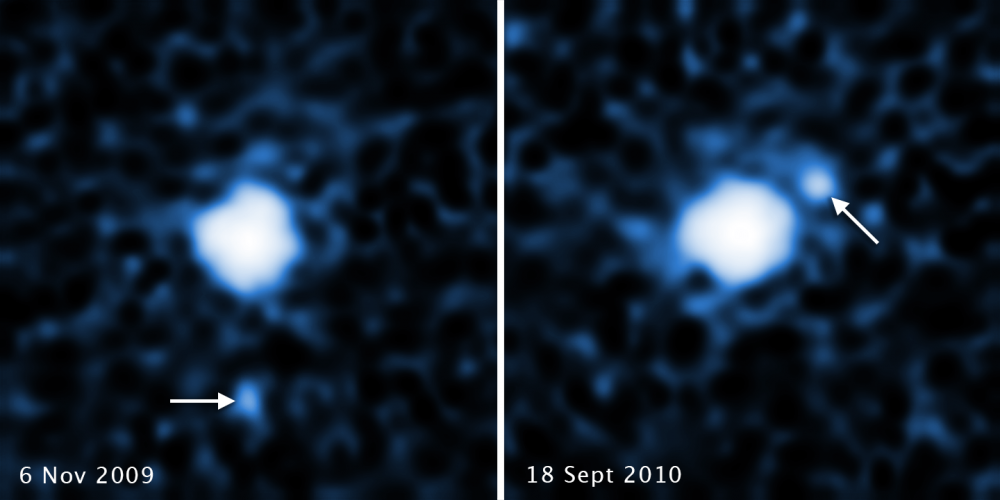Discovery of Hungarian and American astronomers tells about the past of the solar system
Based on the data from Hubble and two other space telescopes, Csaba Kiss and his research group from the Konkoly Observatory, Research Centre for Astronomy and Earth Sciences have discovered that the third largest dwarf of the solar system has a moon. The recently published results can help in refining the theoretical models of moon formation and ultimately in the understanding our cosmic past.
18th May, 2017
Upon observing the objects of the Kuiper-belt – a region beyond Neptune's orbit – Csaba Kiss and his collegues noticed that the rotation rate of the third largest dwarf planet of the solar system, 2007 OR10 is suprisingly slow. They were suspecting that the reason for this could have been the gravitational effect of a previously unknown satellite object – a moon.
In order to identify the new celestial object the researchers employed yet another space telescope: they found two images of 2007 OR10 roughly a year apart in the archives of the Hubble Wide Field Camera 3 that proved the gravitational bond between the dwarf planet and the new object.
 These two images, taken a year apart, reveal a moon orbiting the dwarf planet 2007 OR10. Each image, taken by the Hubble Space Telescope’s Wide Field Camera 3, shows the companion in a different orbital position around its parent body. Credit: NASA, ESA, C. Kiss (Konkoly Observatory), and J. Stansberry (STScI)
These two images, taken a year apart, reveal a moon orbiting the dwarf planet 2007 OR10. Each image, taken by the Hubble Space Telescope’s Wide Field Camera 3, shows the companion in a different orbital position around its parent body. Credit: NASA, ESA, C. Kiss (Konkoly Observatory), and J. Stansberry (STScI)The astronomers calculated the diameters of both objects based on observations in far-infrared light by the Herschel Space Observatory, which measured the thermal emission of the distant worlds. The dwarf planet is about 950 miles across while the moon is estimated to be 150 miles to 250 miles in diameter.
With the discovery of the moon of 2007 OR10 it became clear that having a satellite object is almost inevitable among the dwarf planets of the Kuiper-belt. "The discovery of satellites around all of the known large dwarf planets — except for Sedna —means that collisions at the time these bodies formed billions of years ago must have been more frequent and that’s a constraint on the formation models,” said Csaba Kiss.
The presence of moons is also very telling when it comes to the relative velocity of the collisions – added John Stansberry of Space Telescope Science Institute (Hubble) –, since when the impact velocity of the colliding objects is too fast, the result is debris escaping the system (as is the case in the asteroid belt because of Jupiter's gravitational effect). On the other hand, when it is too slow, only an impact crater is formed. In order for moons to form as a result of collisions, the impact velocities must be somewhere in the middle.
Ironically the link be between the satellite and the slow rotation could not be proven based on the measurement data of the space telescopes. So the researchers may have discovered the new moon for the wrong reasons, but this does not diminish the importance of the discovery.
The team’s results appeared in The Astrophysical Journal Letters.
The cover image is an artist's rendering of a fictional Kuiper-belt object, source: ASA, ESA and G. Bacon (STScI).
